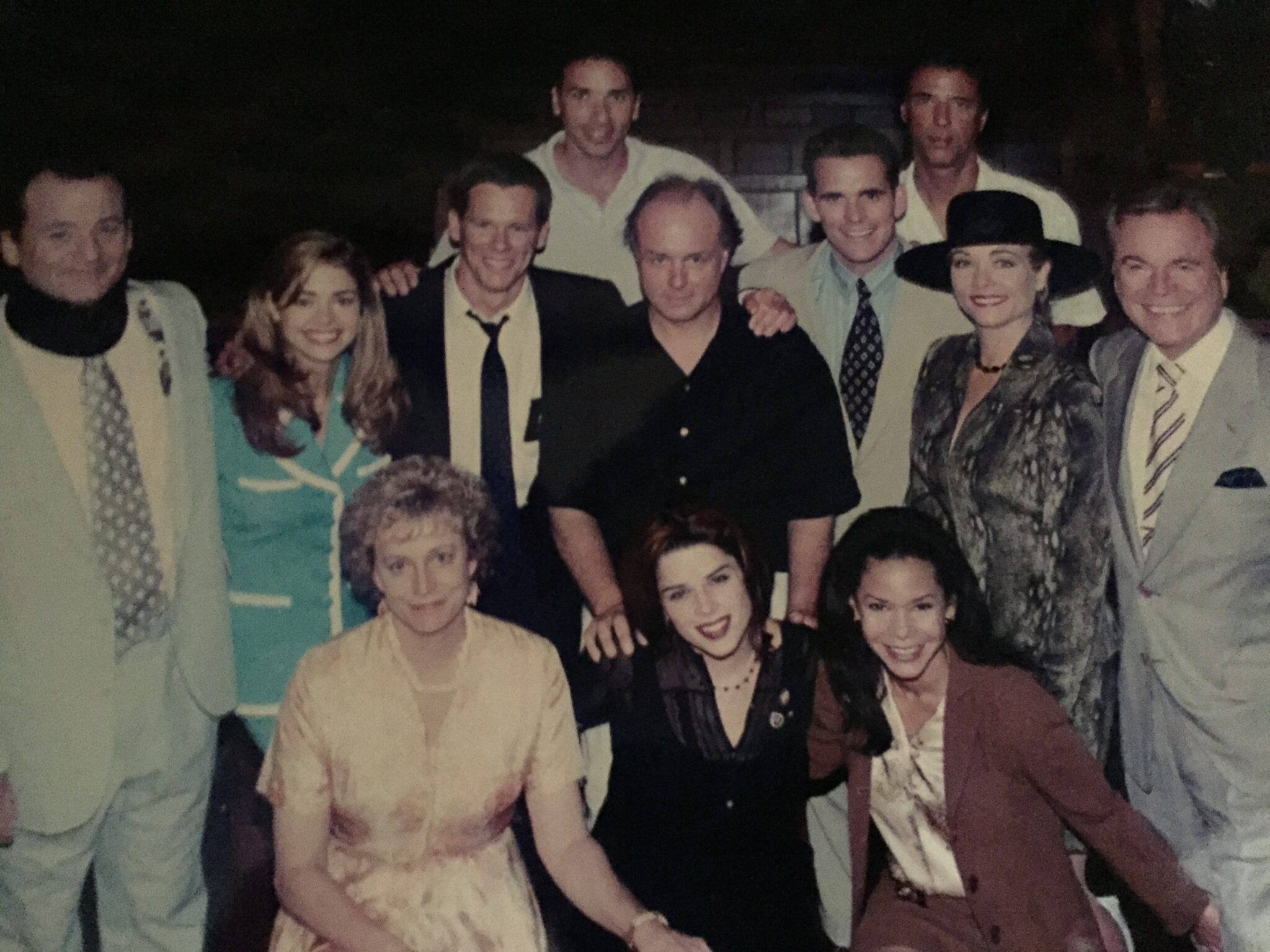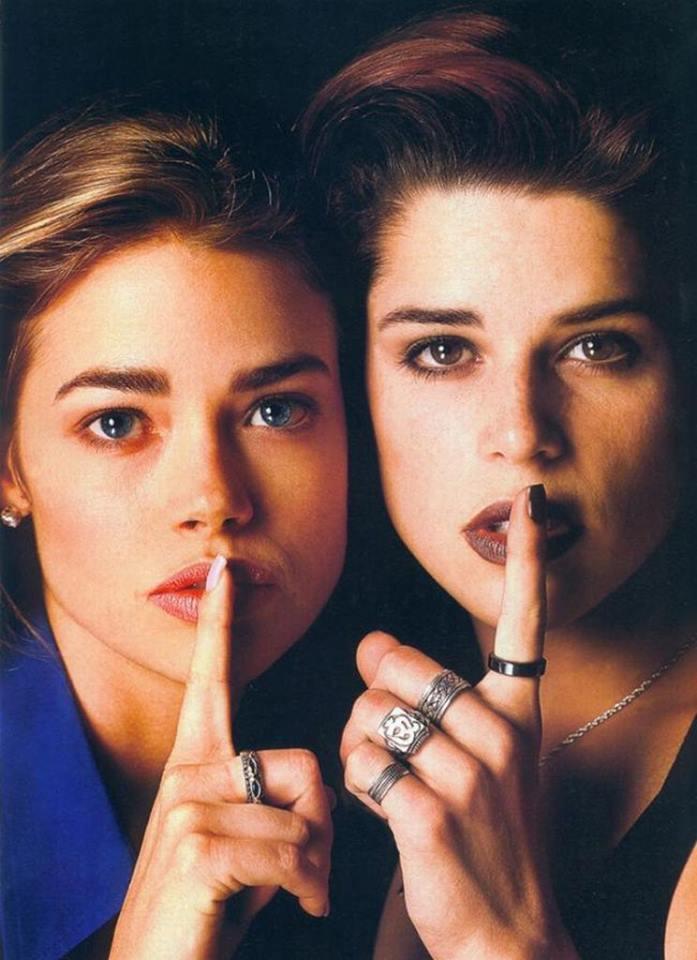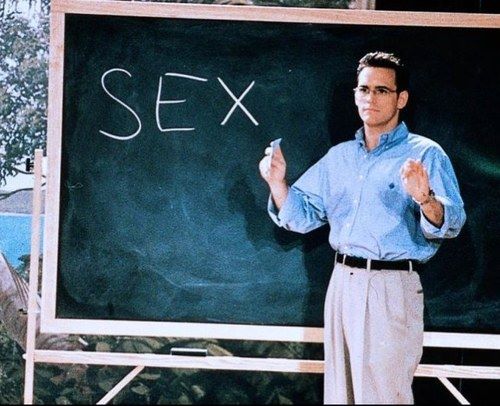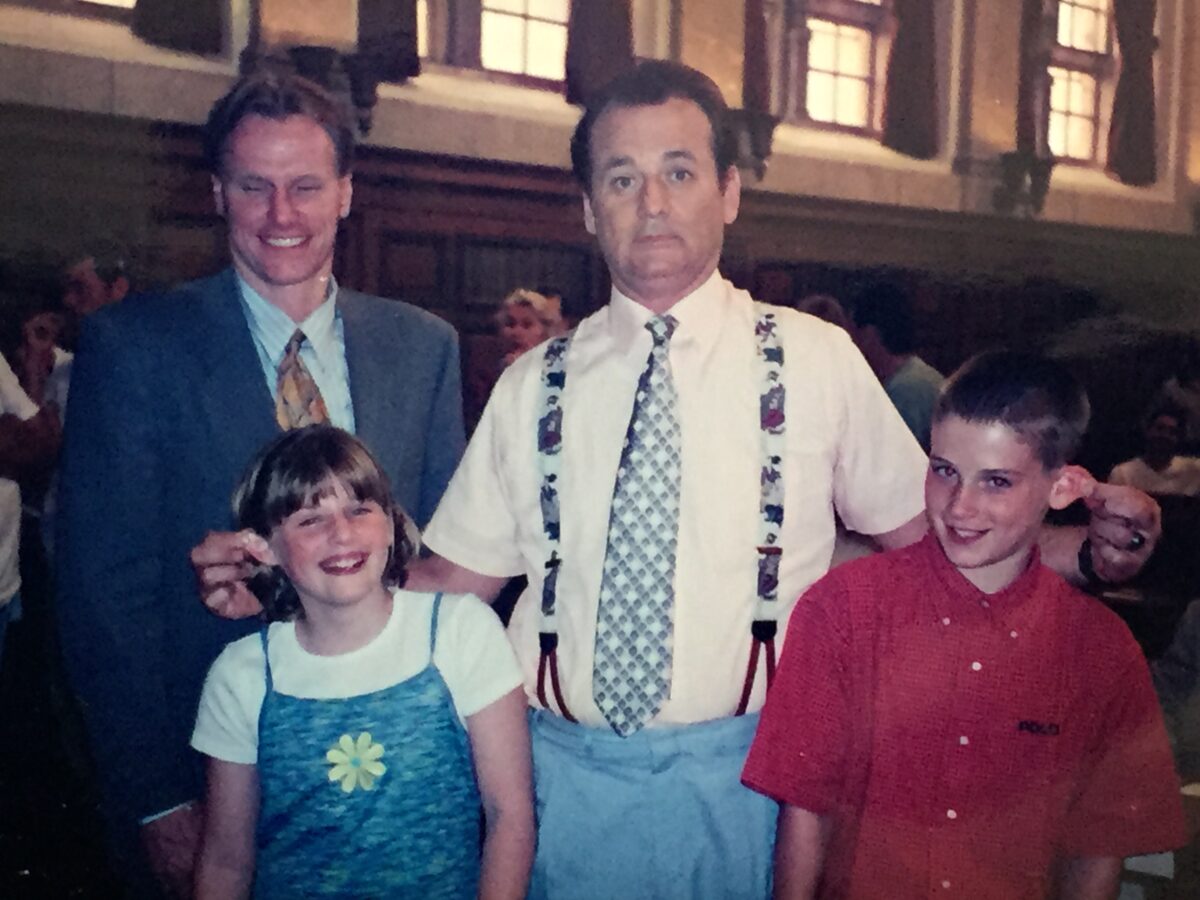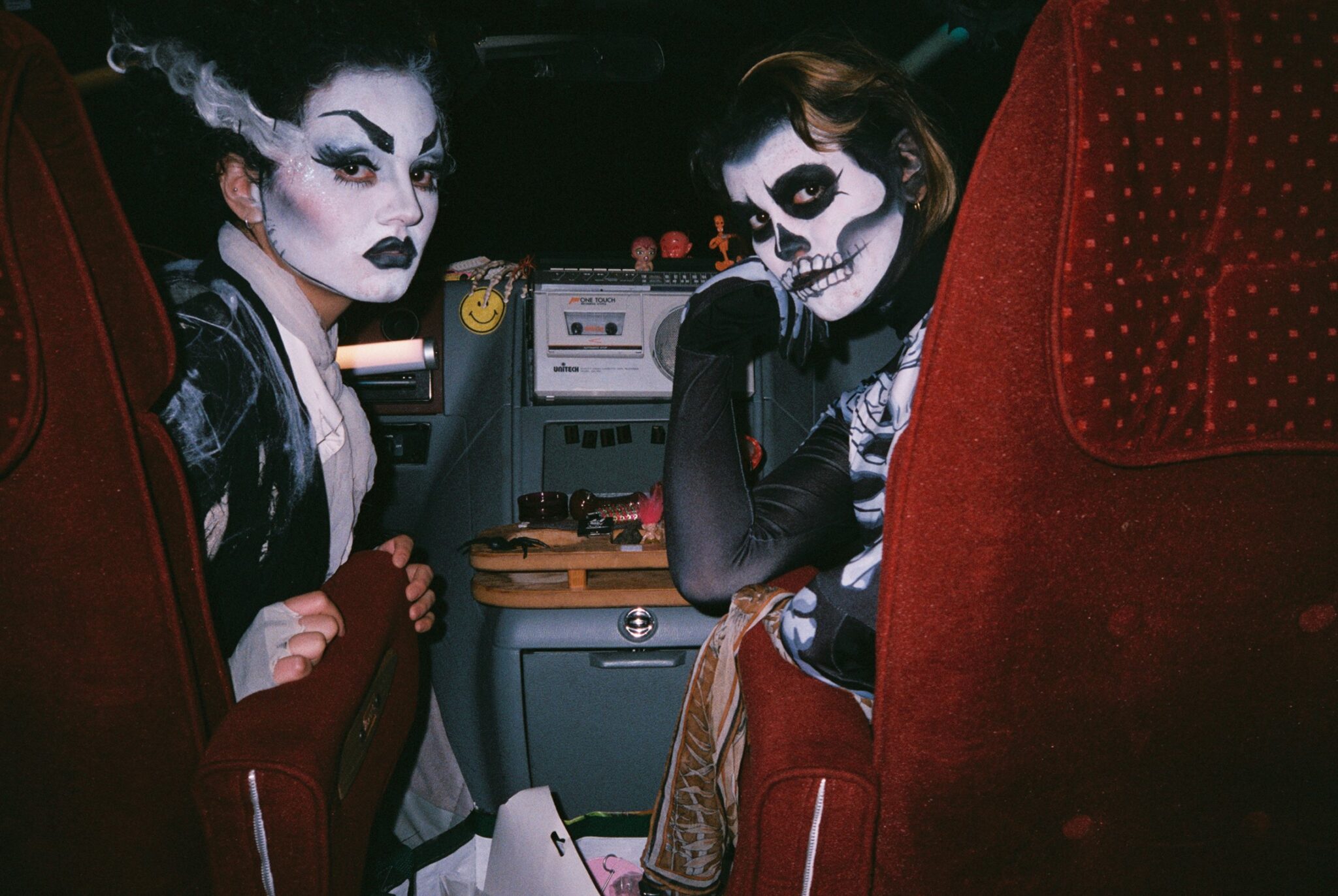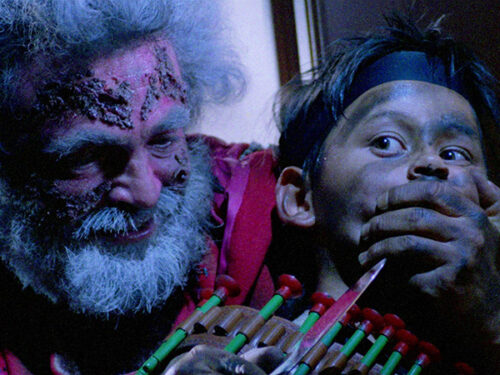“I like to be the right thing in the wrong place and the wrong thing in the right place. Being the right thing in the wrong place and the wrong thing in the right place is worth it because something interesting always happens.”
— John McNaughton
“I respect everything I make fun of.”
― John Waters
In the dead language of the video store counter, Wild Things (1998) is the one with that three-way. You know, where Neve Campbell pours champagne on Denise Richards and Matt Dillon. Or maybe you tell them it’s the one where Neve and Denise have a catfight in the pool and it turns into sex without any help from Matt. Depending on the night, maybe you ask for that one where you won’t even need to freeze frame for a clear view of Kevin Bacon’s dick. One of the clerks sets you up with a copy of Wild Things, and maybe a debate starts among the staff about whether “Skinemax” constitutes a proper genre. (It does.)
As disreputable back then as it is now, the plot of Wild Things slithers out from the bad taste premise of two vengeful teens (Neve Campbell’s poor Suzie and Denise Richards’s wealthy Kelly) accusing their guidance counselor (Matt Dillon’s Sam Lombardo) of rape and into a swamp of avaricious, hard-R depravity. It all goes down along the frontier where wealthy Miami suburbs meet trailer parks and Everglades to see which side is infested with the more dangerous reptiles. To further synopsize its baroque tangle of illicit liaisons, double crosses, and layers of performance might induce a migraine, and more importantly, it’s to explain a joke. What’s more interesting is the issue of who’s in on it.
In our defense against the disreputable, we tell ourselves a lie that movies like Wild Things don’t have to be good to be, you know, good. In fact, people have been telling director John McNaughton just that, ever since the earliest test screenings. By some transitive property of exploitation, “doesn’t have to be good” easily turns to “bad,” or worse, “so bad it’s good.” Many of the compliments have been backhanded, and not every backhand has been a compliment. “There seems to be a meme propagated by some younger critics that it’s trash that accidentally turned out well,” he wrote in an email to me. “Tell it to Andy Warhol, I say.”
While not precisely the Campbell’s soup can of erotic thrillers, one might consider Wild Things the genre’s Brillo Box, a precisely detailed simulacrum of a Hollywood erotic thriller that both cheerfully functions as the thing itself and also as its own uncanny question mark. If a typical thriller promises a world in which nothing is as it seems, Wild Things delivers such a profusion of nothing and seeming that its characters frequently erupt in spasms of mental, sexual, or violent exasperation with the whole thing, always just before the audience might do the same and walk.
As in all of John McNaughton’s best films, the real provocations of Wild Things derive not so much from inflammatory content as from how he and his cast navigate treacherous chasms between promise and reward, tight crevices between guilt and pleasure. His unjustly neglected masterpiece, Normal Life (1994) finds a couple’s (Ashley Judd and Luke Perry) intimations of eternal love proving no match for the disappointments of shitty jobs and consumer debt, sparking a crime wave among the McMansions and strip malls of Chicago O’Hare’s flyover zone. Other directors have imitated his “stunt casting” of Bill Murray as a gangster in Mad Dog and Glory (1993), resulting in some very fine performances against type, but McNaughton bends and breaks expectations to derive a whole sense of character that affects our view of every other performer. Bill Murray doesn’t transform himself in any way we would expect, but rather, the world of the movie conforms to the reality of Bill Murray.
In his notorious debut feature, Henry: Portrait of a Serial Killer (1990), murder scenes aestheticized into art installations and pitch-black laughter over the bottomless stupidity of its odd-couple pair of serial killers (Michael Rooker and Tom Towles) give way to shattering horror and a maximal test of empathy implicating the audience in ways Michael Haneke should envy. That the cuts demanded by the MPAA for Henry to avoid an X rating would have excised the film’s moral center reveals the sturdiness of McNaughton’s conception and the fatuousness of the would-be censors.
Raised working class in the South Side of Chicago, McNaughton took an indirect route to filmmaking, with stints in art school and working the traveling carnival circuit. A skilled and sensitive photographer, he documented the world of carnies in which he’d immersed himself before moving on to the stability of cutting archival documentaries for Chicago-based home video distributor MPI. He got the chance to direct Henry: Portrait of a Serial Killer when MPI decided to try their hand at an original production.
Among postmodernists of ’90s indie cinema (Tarantino, the Coens, Jarmusch) he’s a telling, unshowy outlier. McNaughton’s ironic sensibility arrived with an urgency, anger, and probing of wounds that the others wouldn’t quite match for more than a decade. He typically tells his stories without stylistic scare quotes or self-conscious citations, instead favoring a disarming directness that doesn’t advertise his structural daring. When appropriating trash, he sees no need to theorize, clean it up, or aggrandize his own position as curator.
While eschewing realism, McNaughton always grounds his stories in a tactile sense of place, with keen attention to the human economies of a setting (most often Chicago), down to its grit and stains. If a movie like Wild Things doesn’t have to be good, it also doesn’t exactly need the attention he and screenwriter Kem Nunn (hired to rework Stephen Peters’s original script) devoted to location scouts in South Florida, changing characters on the page and informing the performances McNaughton would elicit.
The film’s meta-sleaze turns on the layers of performance delivered by its fictional characters and its real actors at once, yet McNaughton plays his game much more fairly than the thrillers he parodies. His fictional performers scrupulously round up and play to fictional audiences needed to witness their lies and prevarications, audiences whose reactions are frequently shot to look right out at us. Watch almost any thriller that relies on a character’s pretenses to deliver its twists, and you’ll find them performing only to themselves and just for our benefit. Until the final moments when Campbell’s Suzie prevails, the film only privileges Dillon’s Sam Lombardo with alone time, which he uses to pilot his airboat into murky waters in search of alligators to feed.
Ultimately, the sex scenes in McNaughton’s original, preferred cut (which received an R with no fuss or muss) turn out to be much less outré than its class-conscious performativity, and also less consequential than their video store rep. McNaughton even frustrates us by cutting off coitus abruptly with a phone call from the principal’s office, or with Bacon yelling, “They’re acting!” as a superior switches off his illicit video of girl-on-girl in the pool. More diabolically, he cuts from Kelly’s tearful video testimony of rape to the reactions of Jeff Perry’s prosecutor clearly getting off on it, and Daphne Rubin-Vega’s detective spoiling to call bullshit on the story. If we came for the sex, we stay for satire on the sleazy mutability of character and identity, up and down ladders of class, privilege, and authority. It’s ourselves we murder for the money.
In the first of a series of interviews about his work I sat down with John McNaughton to talk about the making of Wild Things and his approach to tone, trash, and taste.
Spencer Parsons: So what’s your favorite bad movie? Let’s exorcize that demon from the get go.
John McNaughton: What was the one? ‘The Unlucky Lady’ with Pia Zadora? [grabs laptop, consults IMdB] It may have been made for TV. The Lonely Lady! [Reads from plot synopsis.] ‘A young, aspiring screenwriter allows others to exploit her in hopes of achieving success in Hollywood. She goes through affair after sordid affair in her attempts to write her own screenplay and have it produced.’ So, of course she wins the Academy Award. And she’s gotten fucked up on pills and booze, and she gets up there and says, ‘and I know you all thought I fucked my way up here!’
It may have been made for TV, so she didn’t say ‘fucked.’ It was astoundingly dreadful, and so far over the line in its lurid cheesiness. This movie is just insanely entertaining.
Lurid cheesiness is the chief attraction to certain kinds of bad work, but lurid cheesiness itself can also be the reason for making something…
John Waters! He sent me one of my first fan letters for Henry: Portrait of a Serial Killer. Thinking about Wild Things tonally, well generally, I don’t try to homage or borrow from anybody. If I do it’s either subconscious, or else I just outright steal from somebody. You know, ‘that was good. I’m taking it.’ But I would say that if Wild Things owes any debt, it would be to Waters’ pictures.
So, it’s a crime film, but I read some of these new reviews, and it’s as if we set out to make a shitty movie for a payday, and these younger critics are the first ones to discover all this unintentional stuff in there, and if it weren’t for them, the world would never know. I always laugh at this stuff. There’s nothing in that movie by chance.
There’s one piece, by a gay writer. I was glad to see that someone finally got it. Because originally, you know that shower scene?
The one where Bacon inexplicably takes a shower in Dillon’s hotel room?
They were supposed to just — boom! — go at it. That was one of the things that got me when I first read the script. When I read a script, I’m looking for something I haven’t seen before. So, I’m reading Wild Things and I’m thinking this plot is like, ‘oh, they accuse this poor guidance counselor of rape, and he didn’t do it, and that’s gonna be the movie.’ That kind of pabulum. And I’d gotten to that point, and there’s actually a lot of pages left… so I skip ahead to the end to see what happens, and I realize I have no idea what could have happened in between to get there. Now I have to read the whole thing, and when the shower door opens, and they go bang into each other, I’m thinking, ‘I never saw that coming.’ I’ll do this movie. But for various reasons, we didn’t end up doing that.
Well there’s still definitely a homoerotic subtext through the whole movie, and I wondered — I guess now I have it answered — whether that was in the script, or in how you shot it and how the actors played it. Seems like it was even more overt in the script.
It really was, and yeah, as they say, kill your darlings, but that very scene really put me over the edge to say, ‘yes I’ll do this,’ because I didn’t see that coming.
But by complete and utter coincidence, and I couldn’t tell you how many takes we did of that scene, but on every other take, Matt throws [Kevin] the towel, and it covers him. You don’t see his dick. Then, one take, mis-coordinated, and you did. Now, I’ve been working with the same editor — Elena Maganini — since Henry. So, I come in, and she’s cut the scene and says, ‘Here, look at this.’ And I go, ‘Elena! We can’t use that take! Kevin’s got a contract.’ And she goes, ‘You’ve got all those girly scenes, and it’s not fair!’ And Steve Jones was there, so he says, ‘I’ll call Kevin.’ So he calls Kevin, who says, ‘How do I look?’ Steve says, “You look fine.” And no problem. Kevin let it go.
And it’s kinda like karmic destiny. OK, you can’t have this one thing, but we’ll give you this. So everybody gets to have some fun with this movie.
There’s also that scene where the cop played by Daphne Rubin Vega is spying on Matt Dillon through a motel window, and you play it the same way as so many other thrillers would play a man peeping on a woman.
You know, it’s a movie where there’s really only one sympathetic character, and it’s her. And if not for the cab pulling up and tooting its horn, even she might get corrupted by Matt.
Speaking of corruption, most thrillers have maybe one big twist where it turns out one or two characters have been deceiving everyone — especially the audience. But in this movie, that’s almost every character, and some get to flip a few different times.
One of the criticisms of the film when it was released was that there were too many twists. Yes, but did it work? And it was interesting because we had a couple of weeks rehearsal with all the key actors, and it was so difficult for everyone to keep in their head, ‘What lie am I telling? What am I really up to?’ And in every scene, they’re acting twice, because their motive underneath is something totally different from what they’re acting in the world that the audience is seeing. It used to get maddening sometimes. Like, ‘why am I doing it this way?’ Well because three scenes later…
Neve Campbell’s character in particular, goes through a lot. She’s definitely a criminal and a liar and a killer, but she’s also a poor girl trying to claw her way up through a rigged system, and there’s a lot more pathos to her than you’d expect.
Yeah, people always talk about how sleazy it is, but it’s the most political film I ever made. The kid from the trailer park outsmarts them all. She sails away on a boat with a big pile of dough, leaving a trail of corpses behind her. She’s been used and abused, and it’s all revenge.
She was big at the time because of Party of Five, but this was definitely… different.
Neve came in to read, and I assumed she was coming in to read Denise’s role. Didn’t think of her as the girl from the wrong side of the tracks, because I’d only seen her in Party of Five. But she said, ‘No, I want to read for Suzie.’ And I wasn’t seeing it.
But she told me, ‘Where I came from, the men, they don’t have all their teeth.’ It was important to her. She’d gotten a scholarship to a dance school and gone on tour everywhere, and then got the show. And that’s how we knew her. She is so intelligent, which the actor has to be to play that role.
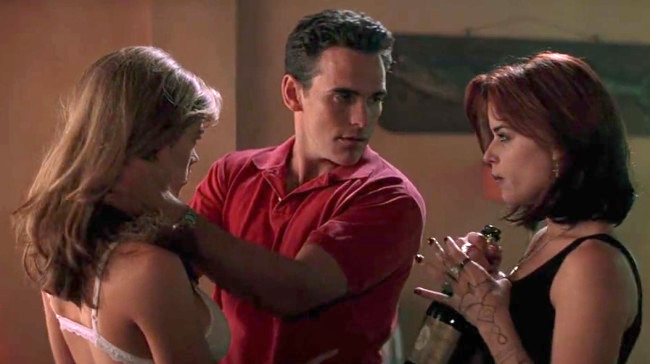
One thing I find really impressive is in the infamous three-way scene, how she watches the other two. Hesitation about having sex with these people, but also fear of being the odd-girl-out if the math doesn’t quite work. It’s a really smart bit of acting for a scene that you could just dismiss as Skinemax material. Obviously, there’s an audience that just shows up for that, but then turns out it’s all drama, all about what’s happening for her character, and however erotic it might be, as soon as the drama is done, you fade out.
Well, you know, it’s interesting, because I’d never seen the unrated version until recently. And what did they do? They extended all the sex scenes, because there’s more footage in every case. And, really, I hated it. Because they’d gone past telling the story. We showed as much as we needed to tell the story, and one more frame — it’s just exploitative. It’s sleazy. I know that sounds strange, talking about this movie… But it destroys the forward motion of the storytelling. When there’s just flesh for flesh, you’re like, ‘can we just get to the next scene and tell the story?’
But at the same time, there’s also a perverse thing with your audience. This is a movie where you know that two things attract your audience: sex and violence. Well, we’re gonna give you sex and violence ’til it’s coming out of your ears.
And the performances do have this constant overheated quality of people advertising they’re about to have sex.
You ever been to South Beach? That’s how people are around there. Whenever there’s some insane crime behavior, it’s always in Florida. It’s one of those places where people go when their lives have gone off the tracks. And it’s hot, so nobody wears any clothes.
This is a movie about people operating from their reptile brains. So let’s go to the swamp. Go to where life started, start with a reptile.
You’re a repeat offender with crime films. Do you have any personal connection to that material?
Looking at the world every day! You go to the movies, and they just generally try to hand you horseshit. So you try to make a counter statement about what life is and what human behavior is. You see a good story, you try to tell it. Put some nuance into it if you can.
You mentioned Florida and the movie has a great sense of the place. Was it a challenge to integrate that into this nutty story?
When I first read the script, as crazy as it was, I thought, ‘if I can believe that this could really happen, then I can direct it.’ It needs a better sense of place. It needs better dialogue. It needs better depth of character. [Original screenwriter] Stephen Peters writes great plot. He’s a novelist who can construct a plot like nobody else. And we barely changed the plot, if at all. I brought Kem Nunn on to do rewrites with me. His books — he’s also a novelist — they’re not plot driven. He has great sense of place and character and dialogue. The two of them together, even though they never met, were a really great combination.
So [producer Peter] Guber sent us down to South Florida and the Miami region for ten days. And they hooked us up with this gal who grew up in Miami, and her father was a builder, so she knew the city like I couldn’t even believe, and she could literally tell you who built every house on any given block. She knew everybody and she knew everything.
Bill Murray wearing that neck brace? One day we did a tour of the rich kid schools… but I mean, these were the bad rich kids. First guy we met was the supposed guidance counselor, and he’s wearing this black neck brace… And he said, “Well I don’t always wear this. Just when insurance comes around.” And then he took it off. That found its way in. I can really believe this story would happen in South Florida. I mean, people pull every kind of insane scam you can think of.
The music is also a kind of glue for the stylistic and tonal shifts in the movie. It’s always one step ahead of the characters. The score knows. Especially that saxophone.
That was the saxophone player from Morphine [Dana Colley]. One of the great things that George Clinton did on that score — the George Clinton who did this and a number of things I’ve done, not P-Funk George Clinton — is that he took some of the people from some of the bands with source music in the film [Morphine, K’s Choice, Smash Mouth], and had them redo some of the parts that had been done by session musicians in the orchestra.
I don’t know if you ever saw Morphine. Just a trio — baritone sax was their lead instrument, with bass and drums. They got such a sleazy sound. I really loved them. And the bass [Mark Sandman], he was quite a character. He died onstage a couple years later. But that really funky (John imitates the distinct sliding bass tone that can be heard all over the score). That was him. He had this old, cheap Japanese bass that he had completely rebuilt. Fretless and it had five strings on it. We originally had a session bass player in there, and it sounded good, because he was really good, but it was so much better the way [Sandman] did it. That just made such a difference in the score. So personalized.
The look of the film is really distinctive, especially for a ’90s neo-noir, when most films in that mode would get really meticulous about recreating or updating those ’40s and ’50s style effects. But you didn’t do that at all.
The one thing I did want from the cinematography was not to be nasty and gritty, but beautiful. Because these people are so nasty in their souls that I wanted them to be beautiful on the surface. It’s reverse gilding the lily.
Jeffrey Kimball shot Top Gun and a bunch of commercials. By letting your cinematographer do what he loves doing, you really get results. For Wild Things, we were photographing desire. You know, ‘I wanna have that. I wanna eat that. I wanna fuck that.’ We shot it to be really desirable, really beautiful. And we mostly used long lenses. Portrait lenses.
I guess Wild Things is probably my one great stab at pure entertainment. But the idea that we were just hacks that got together to make a piece of shit for a paycheck? No way.
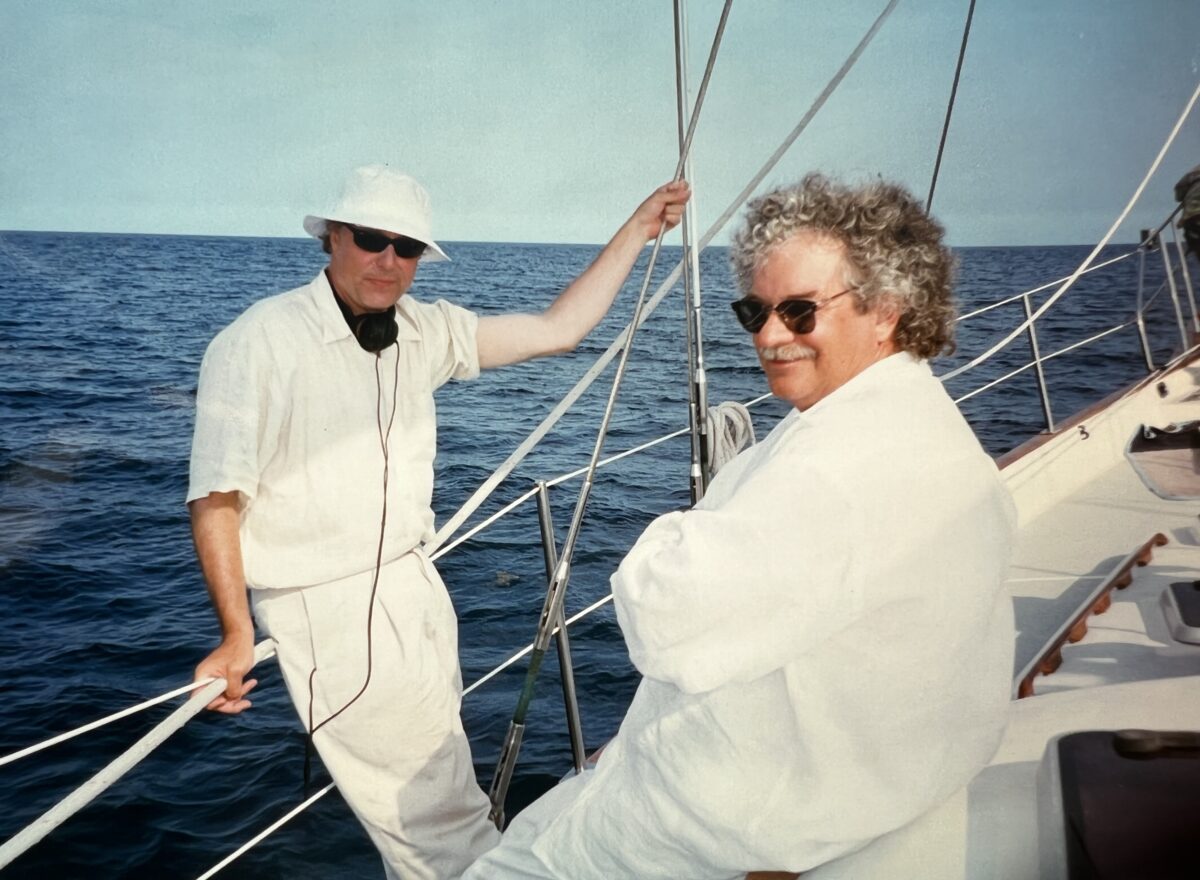
Well, would you make something that you knew was bad? I mean, these days that’s actually kind of a thing.
I did a TV pilot once. I wound up working with people I really didn’t like. It wasn’t bad. I got a phone call. ‘Here’s a pilot. You can go scout two weeks before Christmas, take a couple weeks off, shoot. You’ll be out by April, and you’ll have made enough money not to have to work for the rest of the year.’ And then it just almost killed me.
It’s so difficult to make a movie for me, emotionally. I’ll get ill. I mean, I break down anyway. The stress. And if you don’t love it, you can get really ill. You think, ‘it’s a walk in the park, and I’ll grab the check.’ It doesn’t work out that way. There is no dishonor in failure aiming high. But there is dishonor in failure aiming low.
People are going to take from it what they will. That’s how it’s always been and should be. But in all of my movies, I always love lurid. Pour in a cup of lurid. And on Wild Things, we poured in a couple cups of lurid. Good taste is your enemy sometimes.
Purchase Wild Things on 4K UHD or Blu-ray on Amazon
Stream Wild Things
(Split Tooth may earn a commission from purchases made through affiliate links on our site.)

